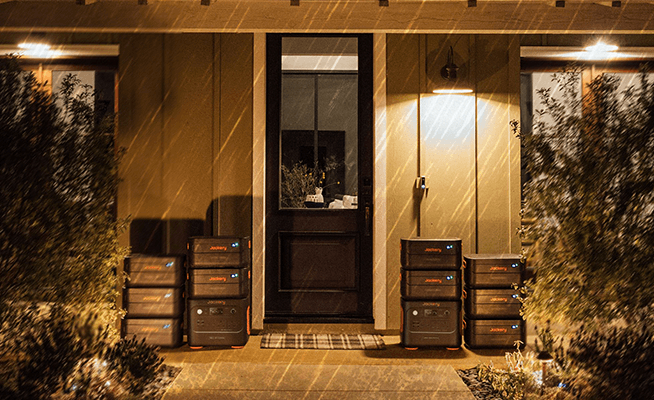The average cost of 1 kWh of electricity in the UK will be about 25.73 pence in 2025, while the standing charge will be about 51.37 pence. But the costs change depending on where you live, how you pay, and what kind of tariff you have.
Understanding what a kilowatt-hour is and how it affects your expenses can help you make better choices. This article covers typical expenses, Ofgem price caps, regional variances, and practical strategies for saving money on energy. Let's find out how much a kilowatt-hour costs and why it matters.
|
Key Takeaways: |
|
What Is a kWh, and Why Is It Important?
A kilowatt hour (kWh) is an indicator of how much energy you consume. Despite the name, it does not indicate the amount of kilowatts used every hour. It's a unit of measure. A kilowatt hour is the amount of energy used if you ran a 1,000-watt device for an hour. However, different appliances require varying amounts of energy; for example, an alarm clock uses far less electricity than an electric kettle.
Here are a few examples:
To utilise 1 kWh, a 50-watt alarm clock would need 20 hours.
It would take ten hours for a 100-watt light bulb to generate one kWh.
In about half an hour, a 2,000-watt dishwasher would consume one kWh.
What's The Difference Between a kW and a kWh?
Kilowatts (kW) are a measure of power, whereas kilowatt-hours (kWh) are units of energy.
Said, kW denotes the amount of energy required for a gadget to function, whereas kWh reflects the amount of energy used.
A power rating specifies the amount of electrical power required for an item to function at any given time. Energy is needed to keep the power going. So, to keep a one-kW appliance operating for an hour, one kWh of energy is required.
kW stands for kilowatt, which is a measurement of how much electricity an item needs to operate. A kilowatt equals 1,000 watts. A 1,000-watt hoover, for example, is the same as a 1 kW hoover.
kWh stands for kilowatt hour (kWh), which is how we measure energy in the house. A kilowatt hour is the amount of energy required to operate a 1,000-watt (or 1kWh) device for one hour.
How Much Does 1 kWh of Electricity Cost?
Market circumstances and the current price cap determine the price of energy. Assume the price for 1 kWh of regular rate electricity is 25.73p.
Assume you have a 1,000-watt electric heater, commonly known as a 1 kW electric heater. Assume you leave the heater on for three hours each day.
To calculate the kWh cost of using your heater for three hours every day, multiply the appliance's kW rating by the number of hours you use it and the power cost in pounds and pence.
So for your electric heater, this would look like:
1 kW x 3 hours x 0.257p power cost per kWh = £0.84p/day
All of your appliances consume energy in the same manner. Some of them will only be used for a few minutes each day (like your kettle), while others will be on all the time (like your fridge). But they all use power.
The Ofgem Price Cap (2025)
The Ofgem price ceiling is meant to keep energy firms from charging customers too much for basic variable tariffs. Every three months, it is reviewed and changed to take into account supplier margins, network costs, and wholesale prices. From July 1 to September 30 2025, the energy price limit establishes the maximum prices for most regular tariffs at:
|
Charge Type |
Electricity (Q3 2025) |
|
Unit Rate |
25.73 pence per kWh |
|
Standing Charge |
51.37 pence per day |
(Data Source: Energy Guide)
Here's the cost breakdown for a typical home that uses 2,700 kWh of power per year:
Energy consumption: 2,700 kWh x £0.2573 = £694.71.
Standing charge: 365 days x £0.5137 = £179.80
Total: £694.71 + £179.80 = £874.51 per year
Even while the standing charge seems like a small amount, it makes up more than 20% of your entire yearly power bill, even if you don't use much electricity. For planning and cutting costs, it's essential to know how unit rates and fixed charges are related. It's crucial to understand that:
The cap does not restrict your overall cost; rather, it limits the price per unit of energy utilised. Your actual bill is based on your consumption, not simply the unit cost.

What Is The Average Electricity Cost Per kWh Across The UK?
There are 14 power distribution zones in the UK, each with its unique set of price modifications, according to energy companies. This implies that even if a home in London uses the same amount of energy as one in the North West, it may spend more per kWh.
Following the most recent adjustments to the 'Energy Price Cap', which controls the maximum amount that energy firms may charge consumers on 'Standard Variable Tariffs', the average power cost per kWh in the UK is now 25.73p. That is a 4.8% decrease from prior energy price cap rates. Here's the breakdown by region:
|
Region |
Average Electricity Price (p/kWh) |
|
London |
25.13p |
|
South East |
26.39p |
|
Eastern |
26.01p |
|
Southern |
25.94p |
|
Southern Western |
26.31p |
|
North Wales and Mersey |
27.20p |
|
South Wales |
26.32p |
|
Midlands |
25.14p |
|
East Midlands |
25.06p |
|
Yorkshire |
24.84p |
|
North West |
26.65p |
|
Northern |
24.96p |
|
Southern Scotland |
24.53p |
|
Northern Scotland |
25.79p |
(Data Source: The Energy Shop)
Unit rates and standing fees based on Ofgem's price cap for July 1–September 30, 2025.
When comparing energy unit prices, it might be essential to discover the typical electricity cost in your area. This is because energy rates vary based on where you reside in the nation, known as a PES region, which stands for 'Public Electricity Suppliers', and each powered a different section of the UK when the electricity industry was privatised in 1997.
What Is the Typical Standing Fee for Electricity across the United Kingdom?
The average electricity standing fee in the UK is 51.37p per day, down 4.5% from the average of 53.80p per day on April 1, 2025. The table below compares the average cost of power by area to your daily standing charge:
|
Region |
Average Electricity Standing Charge (p/day) |
|
London |
43.76p |
|
South East |
45.28p |
|
Eastern |
45.94p |
|
Southern |
42.30p |
|
Southern Western |
51.72p |
|
North Wales and Mersey |
67.65p |
|
South Wales |
49.38p |
|
Midlands |
50.69p |
|
East Midlands |
46.78p |
|
Yorkshire |
56.35p |
|
North West |
48.85p |
|
Northern |
57.56p |
|
Southern Scotland |
54.25p |
|
Northern Scotland |
58.69p |
(Data Source: The Energy Shop)
Unit rates and standing fees based on Ofgem's price cap for July 1–September 30, 2025.
Which Regions Are Most Expensive?
Electricity and gas rates in Britain differ by location, even if you have the same circumstances and consume the same amount of energy as another home. For example, in terms of typical power bills beginning in April 2025, the North Wales and Mersey area has the highest, while London has the lowest.
The extra expenditures per region represent the various network costs connected with that section of the country.
What Is the Cost of Electricity by Region?
The price cap is set at £1,720 from July 1 to September 30, 2025. Standing fees and regional unit prices look like this:
|
Region |
Gas unit rate July to September 2025 |
Gas daily standing charge July to September 2025 |
Electricity unit rate July to September 2025 |
Electricity daily standing charge July to September 2025 |
|
North West |
6.31 pence per kWh |
29.92 pence per day |
26.65 pence per kWh |
48.85 pence per day |
|
Northern |
6.28 pence per kWh |
29.90 pence per day |
24.96 pence per kWh |
57.56 pence per day |
|
Yorkshire |
6.30 pence per kWh |
29.89 pence per day |
24.84 pence per kWh |
56.35 pence per day |
|
Northern Scotland |
6.27 pence per kWh |
29.94 pence per day |
25.79 pence per kWh |
58.69 pence per day |
|
Southern |
6.43 pence per kWh |
29.47 pence per day |
25.94 pence per kWh |
42.30 pence per day |
|
Southern Scotland |
6.27 pence per kWh |
29.97 pence per day |
24.53 pence per kWh |
54.25 pence per day |
|
North Wales and Mersey |
6.34 pence per kWh |
30.09 pence per day |
27.20 pence per kWh |
67.65 pence per day |
|
London |
6.42 pence per kWh |
30.18 pence per day |
25.13 pence per kWh |
43.76 pence per day |
|
South East |
6.26 pence per kWh |
29.55 pence per day |
26.39 pence per kWh |
45.28 pence per day |
|
Eastern |
6.27 pence per kWh |
29.59 pence per day |
26.01 pence per kWh |
45.94 pence per day |
|
East Midlands |
6.20 pence per kWh |
29.64 pence per day |
25.06 pence per kWh |
46.78 pence per day |
|
Midlands |
6.28 pence per kWh |
29.84 pence per day |
25.14 pence per kWh |
50.69 pence per day |
|
Southern Western |
6.58 pence per kWh |
29.57 pence per day |
26.31 pence per kWh |
51.72 pence per day |
|
South Wales |
6.48 pence per kWh |
30.00 pence per day |
26.32 pence per kWh |
49.38 pence per day |
|
Great Britain average |
6.33 pence per kWh |
29.82 pence per day |
25.73 pence per kWh |
51.37 pence per day |
(Data Source: Uswitch)
How to Calculate Your Electricity Bill?
To determine your actual power costs, you need two figures from your bill:
Your unit rate (pennies per kWh)
Your daily standing fee.
Then multiply by your household's use and the number of days in your billing cycle.
Example: Medium-Usage Household
Suppose you live in the East Midlands, where rates are:
Unit rate: 25.06p per kWh.
Standing charge: 46.78p per day.
Annual power consumption: 2,700 kWh (a typical medium-use UK household).
Your bill will be:
To calculate electricity usage, multiply 2,700 by £0.2506, which is £676.62.
Standing fee = £170.75 (365 multiplied by £0.4678).
Total anticipated bill: £676.62 + £170.75 = £847.37 per year.
This value may be significantly higher or lower based on:
How many people live in your home
How energy efficient are your appliances?
If you employ time-of-use tariffs, such as Economy 7
How Payment Type Impacts Electricity Costs
Many consumers are curious about the potential changes to their energy bill depending on the payment method they choose. Depending on how you pay for your power, Ofgem has different pricing caps. The three primary forms of payment are:
Prepayment meters, which have historically been the most costly, are becoming less so in 2025 as a result of government assistance. Direct debit, which is usually the least expensive, is more cost-effective than Standard credit (pay on receipt of bill).
Based on the current price cap, the table below compares the unit and standard prices of energy in various areas for single-rate consumers paying by various means between July 1, 2025 and September 30, 2025:
|
Region |
Direct Debit Unit Price (p/kWh) |
Direct Debit Standing charge (p/day) |
Credit Unit Price (p/kWh) |
Credit Standing Charge (p/day) |
Prepayment Unit Price (p/kWh) |
Prepayment Standing Charge (p/day) |
|
North West |
26.65 |
48.85 |
28.15 |
56.46 |
25.81 |
48.85 |
|
Northern |
24.96 |
57.56 |
26.36 |
65.77 |
24.17 |
57.56 |
|
Yorkshire |
24.84 |
56.35 |
26.23 |
64.45 |
24.05 |
56.35 |
|
Northern Scotland |
25.79 |
58.69 |
27.24 |
66.81 |
24.98 |
58.69 |
|
Southern |
25.94 |
42.30 |
27.39 |
50.22 |
25.12 |
42.30 |
|
Southern Scotland |
24.53 |
54.25 |
25.91 |
61.92 |
23.75 |
54.25 |
|
North Wales and Mersey |
27.20 |
67.65 |
28.73 |
75.99 |
26.34 |
67.65 |
|
London |
25.13 |
43.76 |
26.54 |
50.61 |
24.33 |
43.76 |
|
South East |
26.39 |
45.28 |
27.87 |
53.35 |
25.55 |
45.28 |
|
Eastern |
26.01 |
45.94 |
27.47 |
53.99 |
25.19 |
45.94 |
|
East Midlands |
25.06 |
46.78 |
26.47 |
54.61 |
24.26 |
46.78 |
|
Midlands |
25.14 |
50.69 |
26.55 |
58.51 |
24.34 |
50.69 |
|
Southern Western |
26.31 |
51.72 |
27.79 |
60.03 |
25.47 |
51.72 |
|
South Wales |
26.32 |
49.38 |
27.80 |
56.89 |
25.49 |
49.38 |
|
Great Britain average |
25.73 |
51.37 |
27.18 |
59.26 |
24.92 |
51.37 |
(Data Source: Ofgem)
What Can 1 kWh Power?
Appliances differ significantly from one another in terms of energy efficiency. Some (estimated!) examples of what may consume one kWh are as follows:
Using a 10,000-watt electric shower for six minutes.
Using a 3,000-watt immersion heater for 20 minutes.
30 minutes of cooking at 2,000 watts in an oven.
60 minutes of use of a 1,000-watt iron.
Less than an hour of a 1,000–1,500-watt dish-washing operation.
Using a 200–400-watt refrigerator-freezer for around three hours
Viewing a 42-inch, 80-watt LED television for twelve and a half hours.
Using a 130–200-watt electric blanket all night.
Utilising a laptop that uses 20–50 watts all day.
Five days of using a broadband router that uses seven to ten watts.
Even in standby mode, specific gadgets continue to use energy. A computer or TV left on standby continues to use a tiny amount of electricity, which increases your energy bill by a small amount.

Popular Appliances and How Much They Cost to Run
Calculations are based on the Ofgem energy price cap rate of 28.34 p/kWh, which applies from April 1 to June 30, 2025. Rates are subject to change, and real costs may vary. For current prices, visit Ofgem.
|
Appliance type |
Daily active cost |
Daily standby cost |
Annual standby cost |
|
Desktop computer |
£3.06 |
£0.04 |
£13.39 |
|
Dishwasher |
£8.66 |
£0.02 |
£7.44 |
|
Fridge |
£0.16 |
£0.16 |
£56.89 |
|
Kettle |
£20.38 |
£0.0001 |
£0.74 |
|
LCD TV (120 W) |
£1.22 |
£0.02 |
£5.70 |
|
Microwave |
£10.19 |
£0.02 |
£5.95 |
|
Phone charger |
£0.03 |
£0 |
£0.64 |
|
Tumble dryer |
£30.56 |
£0.02 |
£6.45 |
|
Washing machine |
£14.26 |
£0.02 |
£6.45 |
(Data Source: Eonnext)
The Average kWh Use and Cost for a Household
According to Ofgem, the average British home contains 2.4 people and consumes 2,700 kWh of electricity and 11,500 kWh of gas per year. This comes out to 242 kWh of electricity and 1,000 kWh of gas every month.
Learn about the average kWh use and cost per household on Ofgem's basic variable tariff. Your real expenditures may be greater or lower than the average, depending on how much you use and the unit price of gas and electricity.
What Determines the Cost of Electricity Per Kilowatt Hour on My Energy Bill?
The price varies according to your supplier, tariff, meter type, and area. According to the Energy Saving Trust, the national average price per kWh in pence is £0.22. When picking your energy and gas rate, you may consider two key factors:
The unit rate, measured in kilowatt hours (kWh), is the amount you pay for the energy you use.
The standing charge is a fixed price that is levied every day, regardless of whether you use gas or electricity. This covers all costs associated with delivering electricity to your house via the National Grid.
When comparing energy deals, make sure you verify them thoroughly. While a tariff may have a low kWh unit rate, the standing fee may be expensive, so confirm before signing up.
Become An Energy-Saving Expert
With unit prices remaining above 25p/kWh in most places, even minor adjustments can have a significant impact. Here is what you can do.

Tip 1: Upgrade To a Better Tariff
Use comparative tools to investigate fixed-rate or smart tariffs. Some providers offer off-peak reductions, which can be particularly helpful if you own an electric vehicle, a heat pump, or a storage heater.
Tip 2: Set up a Smart Meter
Smart meters enable you to monitor real-time consumption, avoid projected bills, and identify the most costly expenses. Smart meters, which allow you to watch your energy consumption, can help you make simple changes to waste less energy, lowering your costs and carbon emissions. This is a win-win situation.
Tip 3: Optimise Appliance Use
Use dishwashers and washing machines with eco settings.
Do not leave gadgets on standby.
Boil just enough water in the kettle.
Air-dry garments rather than using a tumble dryer.
Improve Home Insulation
Reducing heating expenses decreases the amount of power consumed by electric heaters and storage systems. Consider draught-proofing, radiator panels, and insulation enhancements.
Tip 4: Use LED Bulbs And Energy-Efficient Appliances
Replacing ageing halogens with LEDs may reduce lighting expenses by 80%. When replacing any appliances, go for those with an A rating.
Tip 5: Choose an Alternative Way to Power Appliances
Using a Jackery Solar Generator can be a great way to reduce your electricity bills and gain more control over your energy usage. The savings are primarily achieved by shifting your energy consumption from the expensive grid to free, self-generated solar power.

Jackery Solar Generators Explained
A Jackery Solar Generator is a whole system that includes both Jackery Solar Panels and a Jackery Portable Power Station. This integrated strategy offers several key benefits, particularly in terms of saving on your electric bills.
The most obvious way a Jackery Solar Generator saves you money is by using sunshine, a free and sustainable energy source, to power your electronics. Instead of pulling electricity from the grid, which costs per kilowatt-hour (kWh), the solar panels convert sunlight into electricity, which is stored in the power station's battery. You can then use the stored energy to power appliances without incurring electricity bills.
Many utility companies use tiered pricing, with electricity costing more during "peak hours" and less during "off-peak" hours. Solar electricity can be used to charge the generator's battery during the day, and the stored energy can then be used to power your appliances during the pricey peak hours in the evening.
Jackery Solar Generator 1000 Plus
The Jackery Solar Generator 1000 Plus is an excellent choice for individuals and families looking to save on electric bills, thanks to a combination of its core features and the way it can be integrated into a smart energy consumption strategy.

Harnessing Free, Renewable Energy: The fundamental reason for choosing any solar generator to save money is to use free solar energy. When you connect the Jackery 1000 Plus to its solar panels, you can harness the power of the sun and convert it into usable electricity. You may then use this stored energy to power a wide range of devices, from small electronics to big appliances, without having to pay any utility bills.
Strategic Energy Management with Time-of-Use (ToU) Rates: Many utility providers now use "Time-of-Use" (ToU) rate plans, which charge more for power during peak hours (usually late afternoon and evening) and less during off-peak times. This is precisely what the Jackery 1000 Plus is made for.
Expandable Capacity for Greater Savings: The Jackery 1000 Plus is known for having a long-lasting battery. The basic device can hold 1264Wh, but you may add up to three extra battery packs, which will give you a total of 5kWh. With a greater capacity, you can power more gadgets for more extended periods, making you even less dependent on the grid.
Efficient and Durable LiFePO4 Battery: The Jackery 1000 Plus uses a Lithium Iron Phosphate (LiFePO4) battery. This technology is known for its longevity and a high number of charge cycles (up to 4,000 cycles to 70%+ capacity). This means the generator will maintain its performance for a decade or more of regular use, providing reliable savings for a long time without needing a replacement.
Jackery Solar Generator 1000 v2
The Jackery Solar Generator 1000 v2 is the Jackery Explorer 1000 v2 portable power station paired with SolarSaga 100W or 200W solar panels. The primary way it can help you save on electric bills is by allowing you to use free, solar-generated electricity instead of drawing power from the utility grid.

Peak Shaving and Time-of-Use (TOU) Billing: Many utility companies charge higher rates for electricity during "peak" hours (often in the late afternoon and early evening when demand is highest). You can use the Jackery to power essential appliances during these expensive times, effectively "shaving" your peak usage and lowering your overall bill. You can charge the power station with solar panels during the day and then use the stored energy at night.
Reduced Grid Reliance: By generating your power, you reduce your reliance on the traditional power grid. The more you can power with solar energy, the less you'll pay your electricity provider. While the 1000 v2 is not designed to power an entire home for an extended period, it's capable of running smaller, high-wattage appliances or several low-wattage devices for a while.
Emergency Backup: While not a direct money-saving feature, having a solar generator provides a reliable backup during a power outage. This can prevent costly issues like food spoilage if your refrigerator goes out, a benefit that might be more about avoiding unexpected costs than a direct monthly saving. It has a 1070Wh battery capacity and a 1500W output with a 3000W surge peak. This is enough to run standard household appliances like a refrigerator, microwave, or coffee maker for a limited time.
FAQs
The following are frequently asked questions about the 1 kWh electricity cost:
1. How much does 1 kWh cost in the UK?
The average power cost per kWh (kilowatt-hour) in the UK is around 25.73 pence. This fee varies based on your energy source, region, and tariff. The standing charge is a set daily cost of about 51.37 pence.
2. Is 7 kWh per day a lot?
In the UK, households typically utilise 7 kWh of power every day. A medium-sized UK home typically consumes around 2,700 kWh per year, which equates to around 7.4 kWh per day.
3. Is 20 kWh a day a lot in the UK?
An average UK family uses 20 kWh of power per day, which is regarded as relatively high. The normal daily average is between 8 and 10 kWh.
4. How much does it cost to run a fridge per day in the UK?
The following are some of the common appliances and their running costs per day, per week, per month and per year, including the fridge.
|
Appliance |
Cost per Day (£) |
Cost per Week (£) |
Cost per Month (£) |
Cost per Year (£) |
|
Fridge Freezer |
0.31 |
2.20 |
9.56 |
114.66 |
|
Oven (Electric) |
0.22 |
1.53 |
6.66 |
79.91 |
|
Dishwasher |
0.29 |
2.00 |
8.69 |
104.23 |
|
Microwave |
0.04 |
0.27 |
1.16 |
13.90 |
|
Kettle |
0.05 |
0.33 |
1.44 |
17.39 |
|
Washing Machine |
0.22 |
1.53 |
6.66 |
79.91 |
Final Thoughts
Electricity rates in the UK continue to change, influenced by global markets and regulatory constraints. While the current average is 25.73p per kWh, geographical variations and standing charges have a significant impact on overall costs. Monitoring your energy consumption, switching to competitive rates, and implementing energy-saving behaviours can all significantly impact your annual fee.


































































































